Solution
- Uninstall your ESET endpoint product for macOS
- Uninstall ESET Management Agent
- Manually remove the remaining files
I. Uninstall your ESET Endpoint product for macOS
-
Click Finder
 to open a new window.
to open a new window. -
Click Applications, then click the List icon to display the list of apps. Right-click ESET Endpoint Security and click Show Package Contents in the context menu.

Figure 1-1 -
Navigate to Contents → Helpers and double-click Uninstaller to run the uninstaller.
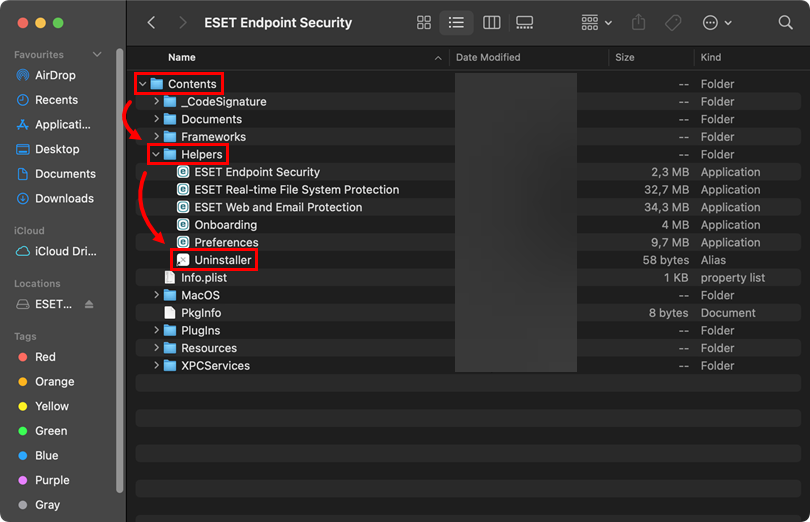
Figure 1-2 -
Click Uninstall.

Figure 1-3 -
If you are prompted, type in your administrator password and click OK.
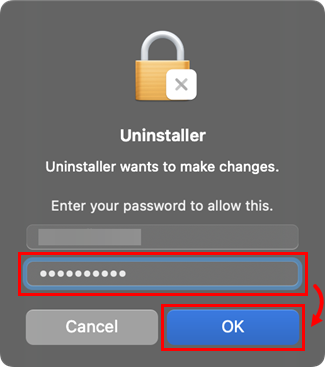
Figure 1-4 -
Click OK.
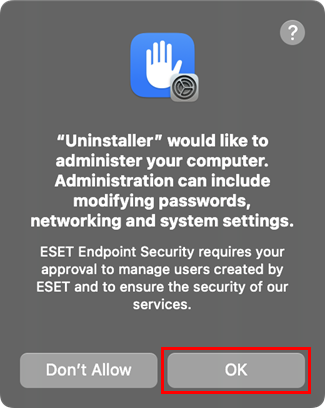
Figure 1-5 -
Wait for the uninstallation to finish and click Close.
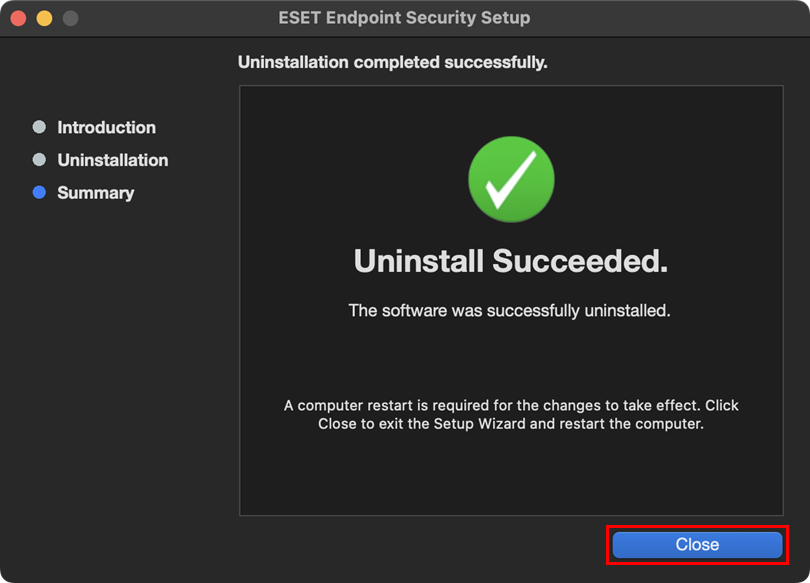
Figure 1-6
II. Uninstall ESET Management Agent
-
Click Finder
 to open a new window.
to open a new window. -
Click Applications and click the List icon to show the list of apps. Right-click ESET Management Agent and click Show Package Contents in the context menu.
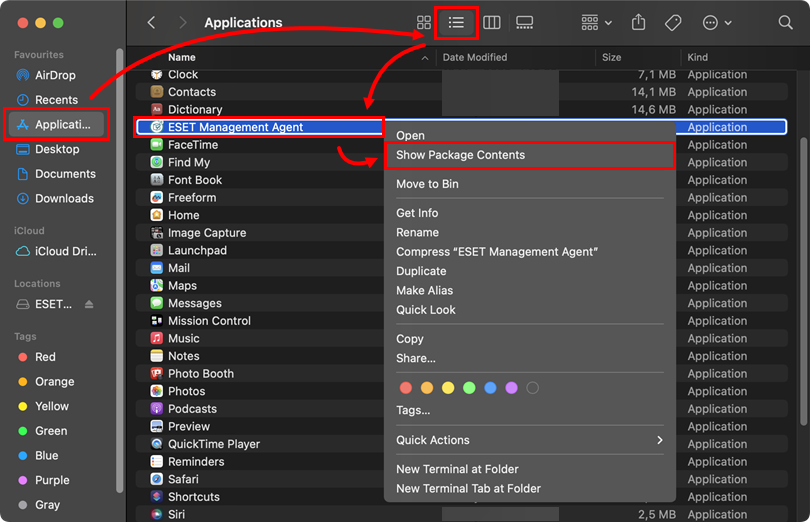
Figure 2-1 -
Navigate to Contents → Scripts and double-click Uninstall.command to run the uninstaller.
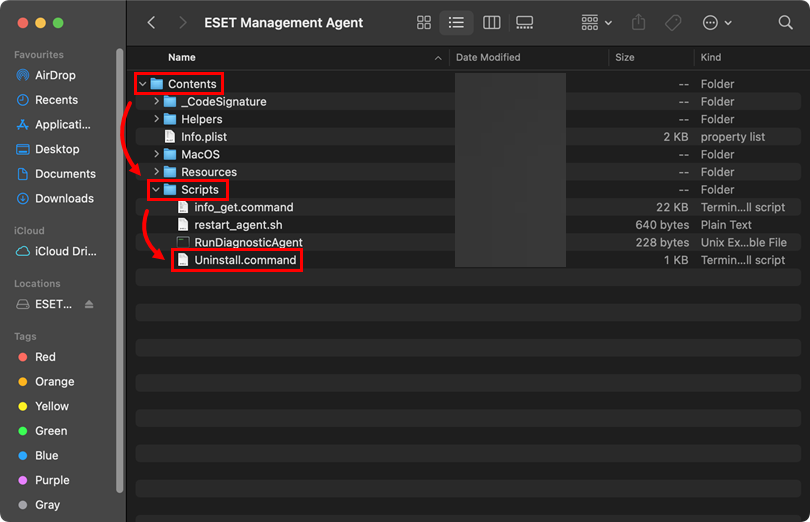
Figure 2-2 -
If prompted, type in your administrator password and press the Return key. You will see the Process completed message when the ESET Management Agent has been successfully uninstalled.

Figure 2-3
III. Manually remove the remaining files
-
Open Terminal window, type or copy/paste the command below and press the Return key.
sudo rm -Rf "/Library/Application Support/ESET" -
Type your password in the command line and press the Return key. Repeat the step with the following commands:
ESET Endpoint Security for macOS
sudo rm -Rf "/Applications/ESET\ Endpoint\ Security.app/"sudo rm -Rf "/Library/LaunchAgents/com.eset.esets_gui.plist"sudo rm -Rf "/Library/LaunchAgents/com.eset.firewall.prompt.plist"ESET Endpoint Antivirus for macOS
sudo rm -Rf "/Applications/ESET\ Endpoint\ Antivirus.app/"sudo rm -Rf "/Library/LaunchAgents/com.eset.esets_gui.plist"sudo rm -Rf "/Library/LaunchAgents/com.eset.firewall.prompt.plist" -
Restart your computer.
-
Click Finder → Applications. If ESET Endpoint Security or ESET Endpoint Antivirus is still present, drag-and-drop the item to the Trash bin icon on your Dock. If prompted, type your administrator password and press the Return key.
-
Your ESET Endpoint product should be completely removed from your computer.
Need further assistance? Contact ESET Technical Support.